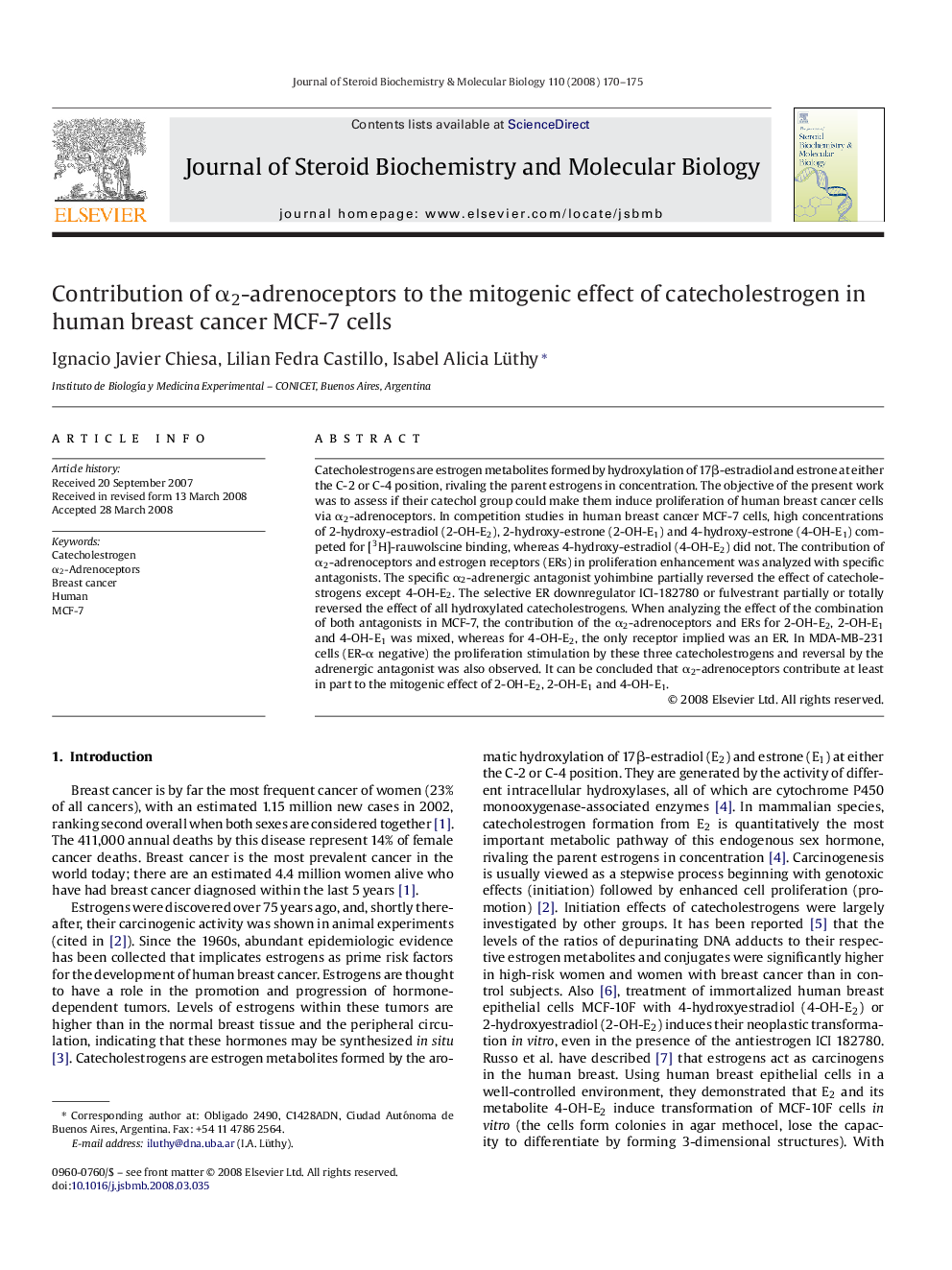| Article ID | Journal | Published Year | Pages | File Type |
|---|---|---|---|---|
| 1992669 | The Journal of Steroid Biochemistry and Molecular Biology | 2008 | 6 Pages |
Abstract
Catecholestrogens are estrogen metabolites formed by hydroxylation of 17β-estradiol and estrone at either the C-2 or C-4 position, rivaling the parent estrogens in concentration. The objective of the present work was to assess if their catechol group could make them induce proliferation of human breast cancer cells via α2-adrenoceptors. In competition studies in human breast cancer MCF-7 cells, high concentrations of 2-hydroxy-estradiol (2-OH-E2), 2-hydroxy-estrone (2-OH-E1) and 4-hydroxy-estrone (4-OH-E1) competed for [3H]-rauwolscine binding, whereas 4-hydroxy-estradiol (4-OH-E2) did not. The contribution of α2-adrenoceptors and estrogen receptors (ERs) in proliferation enhancement was analyzed with specific antagonists. The specific α2-adrenergic antagonist yohimbine partially reversed the effect of catecholestrogens except 4-OH-E2. The selective ER downregulator ICI-182780 or fulvestrant partially or totally reversed the effect of all hydroxylated catecholestrogens. When analyzing the effect of the combination of both antagonists in MCF-7, the contribution of the α2-adrenoceptors and ERs for 2-OH-E2, 2-OH-E1 and 4-OH-E1 was mixed, whereas for 4-OH-E2, the only receptor implied was an ER. In MDA-MB-231 cells (ER-α negative) the proliferation stimulation by these three catecholestrogens and reversal by the adrenergic antagonist was also observed. It can be concluded that α2-adrenoceptors contribute at least in part to the mitogenic effect of 2-OH-E2, 2-OH-E1 and 4-OH-E1.
Related Topics
Life Sciences
Biochemistry, Genetics and Molecular Biology
Biochemistry
Authors
Ignacio Javier Chiesa, Lilian Fedra Castillo, Isabel Alicia Lüthy,
